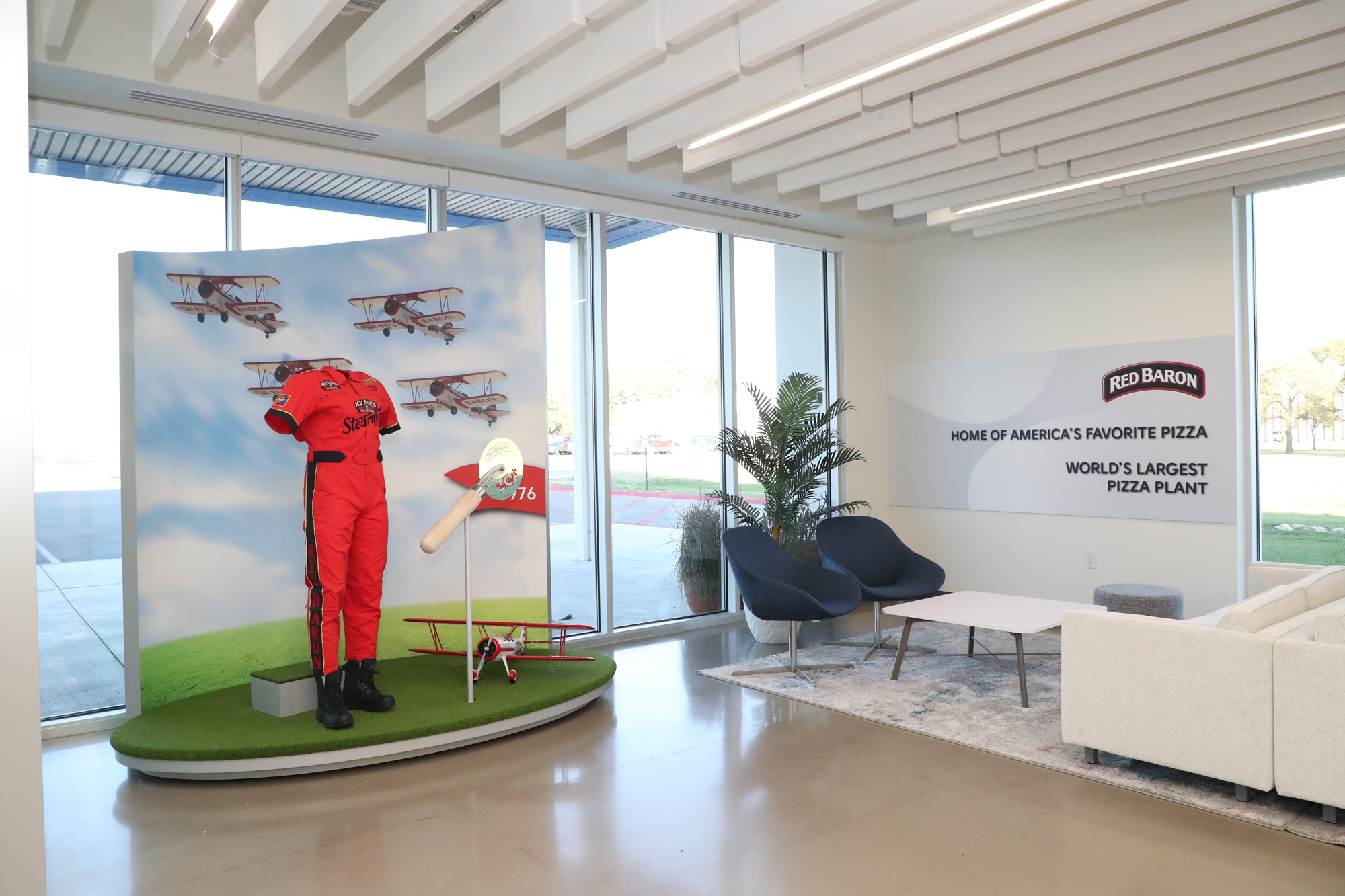
Schwan's Company
STAR partnered with Schwan’s Company to deliver a cohesive branding strategy.
Corporate interiors are evolving beyond aesthetics—they’re strategic assets that shape customer perception, reinforce brand identity, and drive business growth. Savvy brands have long recognized the power of their physical spaces, but now, more business across industries are realizing that their locations must do more than look good—they need to tell a compelling story.
As hybrid work models persist, companies are reimagining office spaces to attract employees back and leveraging underutilized real estate to enhance customer engagement. When an office or showroom serves as a sales or recruiting tool, it must communicate a brand’s identity, values and vision in a way that resonates with visitors.
From transforming static offices into high-tech experience centers to designing hospitality-inspired spaces that foster deeper client connections, businesses are using their physical environments as powerful brand storytelling tools. The most forward-thinking companies are integrating technology, sustainability, and immersive experiences to create vibrant, revenue-generating spaces that leave lasing impressions on customers and partners.
Let’s explore the winning strategies that drive successful outcomes in corporate spaces.
Corporate spaces are evolving into storytelling platforms that go beyond aesthetics, transforming physical environments into dynamic brand narratives. Companies are using interactive design to create deeper emotional connections with visitors and employees alike.
Technology is redefining the way customers engage with corporate spaces. From interactive digital displays to AI-driven personalization, businesses are using technology to create high-impact, immersive experiences that enhance engagement and drive results.
A company’s brand extends beyond its logo—it lives in every element of its physical space. Thoughtfully designed corporate interiors strengthen identity, reinforce messaging, and create a lasting impression on visitors.
Sustainability is no longer an afterthought—it’s a strategic priority. Companies are integrating eco-conscious design choices into their corporate interiors, creating spaces that reflect their commitment to environmental responsibility.
Corporate interiors are no longer just functional—they’re revenue-generating assets. Companies are designing spaces that foster stronger customer relationships, showcase expertise, and drive business growth.
Corporate interiors are evolving, blending immersive storytelling, cutting-edge technology, and sustainable design to create spaces that leave a lasting impact. At STAR, we specialize in crafting branded environments that enhance customer engagement, strengthen brand identity, and support business growth. Whether it’s an innovation hub, a high-tech customer experience center, or a dynamic reception area, our expertise in strategy, design, and execution ensures your space aligns with your vision and objectives.
Ready to bring your corporate space to life? Contact STAR today to start your transformation.
Discover our library of expert insights, best practices, and experiential marketing tips and tricks to keep you in the know and ahead of the crowd.
Insights
STAR partnered with Schwan’s Company to deliver a cohesive branding strategy.
We are here to transform every space into an amazing story. Call, email, or chat with us anytime to learn more.
"*" indicates required fields